How to Pick a Paint Color, Paint a Room, and Not Panic When it is Inevitably Not What You Imagined
We painted our apartment, I freaked out, then fell in love with it and learned a lot in the process
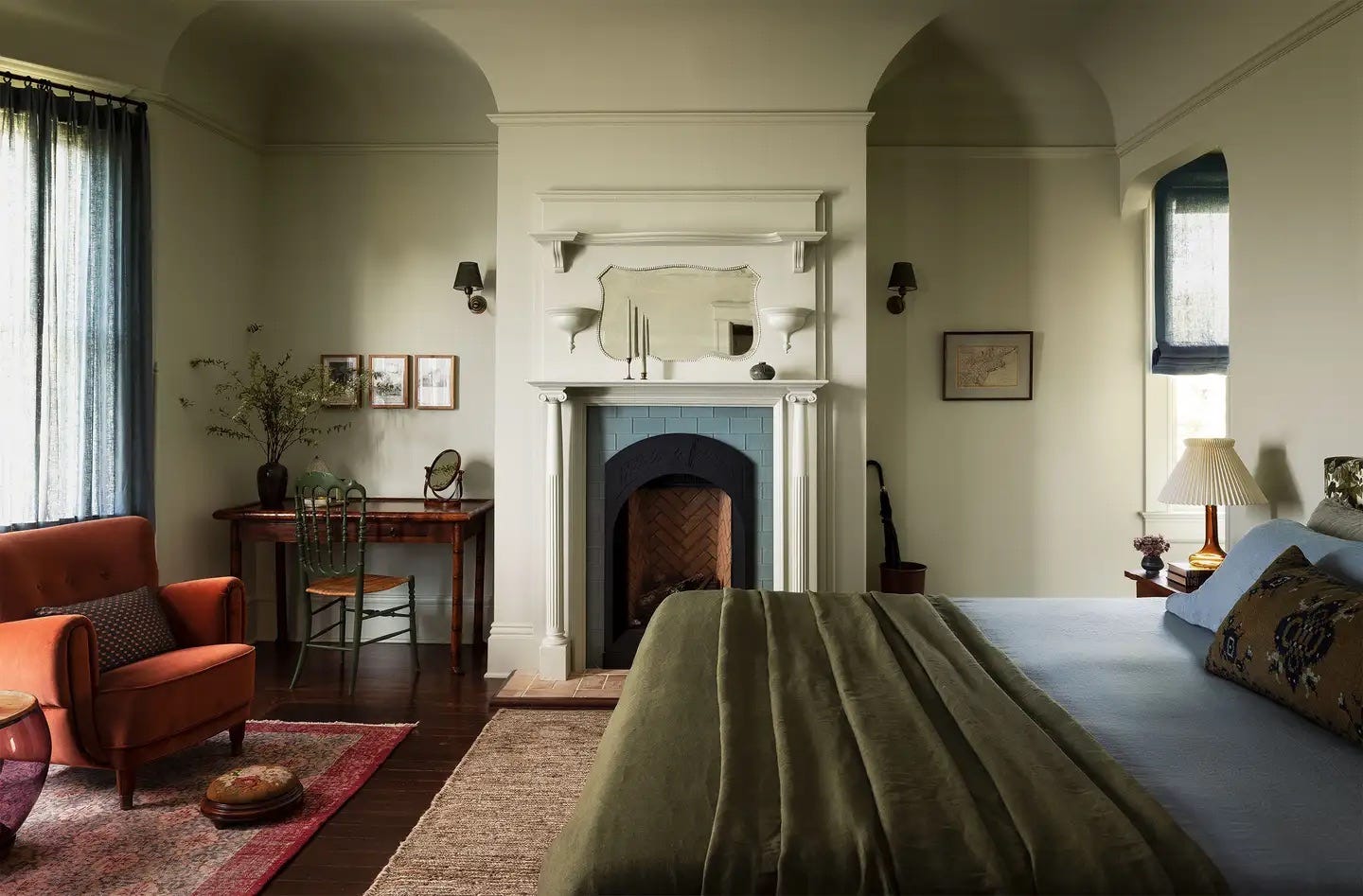
Minor delay in this post due to a little electrical fire in my building on Sunday. Thankfully the firemen extinguished the fire before it left the boiler room and nothing was ruined. But, our building was without power or heat for a few nights. Charlie and I became close with our neighbors from the whole debacle. The five units in the 1860 brownstone communally managed the project of getting it livable again. I have learned a lot about boilers, radiators, electrical wiring, and tenant rights during this fever dream week. I’ll have to share it all in another post.
When we first saw this apartment, we noticed the walls were painted a blinding shade of hospital white, which was not at all in sync with the charming floors and brick fireplace. I have been wanting to paint a room for a while, and this is my opportunity. I thought I knew a lot about painting rooms from work (where I suggest paint colors for clients) but my knowledge was elementary compared to what I learned from firsthand experience. I learned so much in the process of painting for myself. I want to share what I learned with anyone remotely curious about painting.
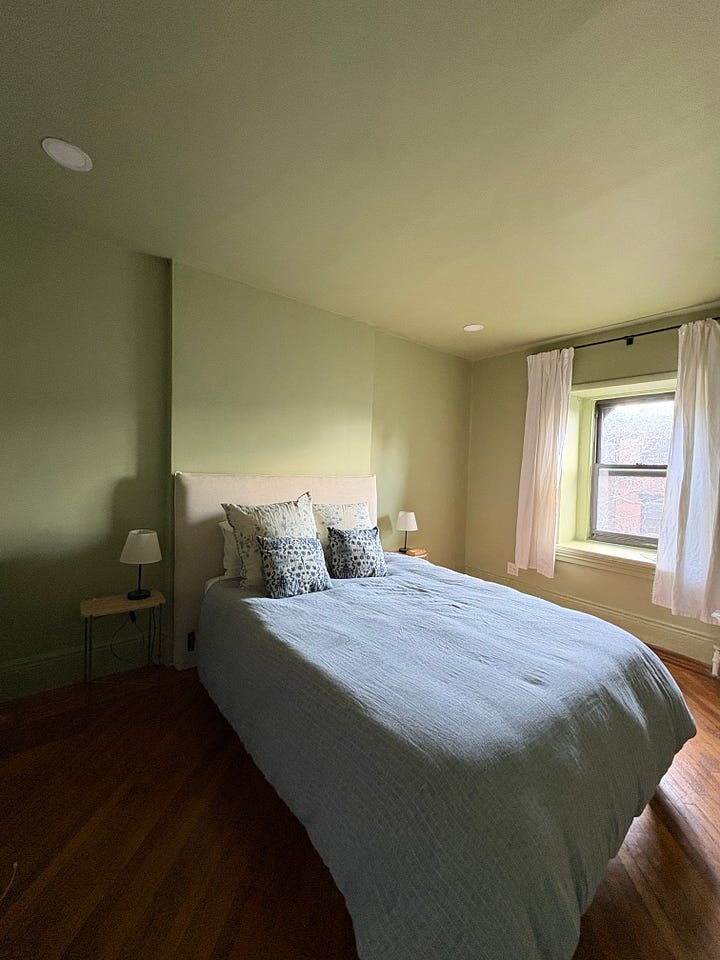

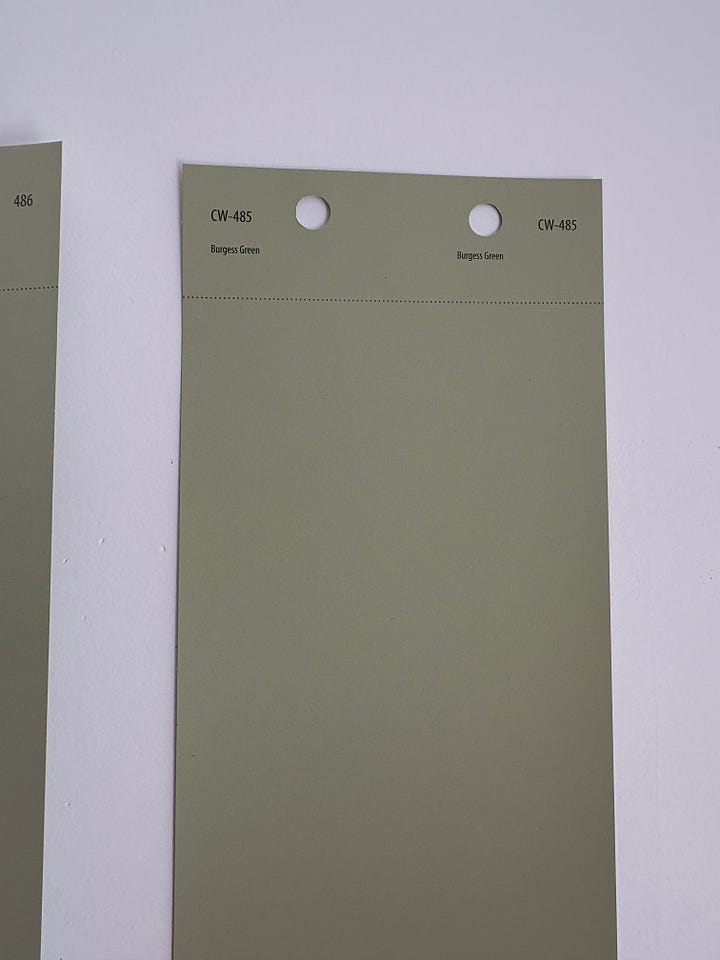

Picking Paint Colors
Start by looking at curated color brands like Farrow and Ball at least for inspiration. Their colors are tested and generally look better than others — It’s sort of like picking from a beautifully curated boutique rather than a giant department store. I guarantee certain colors universally look better than others. If you don’t want to pay for the premium paint (we didn’t) you can always color match the fancy fool proof colors to Benjamin Moore or Sherwin Williams. You can also search which Benjamin Moore or Sherwin Williams colors are most mainstream. While I usually advocate for stepping away from something that is popular, paint colors that have been tested for years are a safe way to make a room look better.
If you’re looking for a fool proof white, my favorites are Simply White, White Dove, and Chantilly Lace. You should decide on one of these colors based off your specific space.
Figure out how the color will look in the room based on these factors:
Natural Light:
Take note of how much natural light your room gets, how big the windows are, and what direction you face. Natural light looks different from artificial light and changes dramatically with the time of the day and the weather.
“Here in the Northern hemisphere, north facing rooms have a cooler, more diffused and constant light. Southern rooms have a warmer toned light that is also more striking, casting shadows that change throughout the day. In an East facing room, you get morning light and in a west facing room afternoon to evening light.” - helpful article from Sophie Robinson
I learned this the hard way. Our living room faces north so the cream color with cool green undertones looks lime green, where it looks more butter yellow in the swatch. And our bedroom faces south so the cool green we painted sometimes looks a little warm avocado.
Artificial lighting and bulb temperature:
I can’t stand lighting over 3000K, it is too “cool” as in too bright and not warm. I prefer 2700K for a pleasant warm glow light. At night, paint colors will be warmer if you have subtle warm lighting like this.
Room size and ceiling height:
Pretty obvious, but bigger rooms with higher ceilings will appear lighter than smaller rooms with lower ceilings. Painting a room a darker color can make a room feel smaller but this isn’t a bad thing. It can make a room feel a lot cozier. Conversely, if you want a room to feel a lot bigger, paint it a light color.
Color of the furniture and other items in the room:
Colors are relative. If you want your paint color to appear warmer, add warmer tone furniture and accents.
Decide if you want your room to feel light and cheery versus dark and moody/cozy. If you’re wanting it to be light I highly recommend picking a paint color way lighter than the swatch, paint always feels darker when it’s on all the walls.
Decide how saturated you want the color to be. If you don’t want it too saturated pick a color swatch way less saturated than you want. Paint always looks more saturated in a room than the swatch.
Take your time selecting a paint color.
Paint swatches on all walls; different walls receive different light.
Look at the swatches on your walls for at least a few days, if not more, to see it in different weather conditions and different times of the day.
Selecting Ceiling Color
Ceilings should typically be lighter than the walls because they tend to look darker. Unless you want an encompassing feeling, in that case its fun to paint the ceiling and trim all the same color. We did this in our bedroom and it makes it cozy. In our living room we left the ceiling the bright white, but next to the wall paint, the brightness isn’t as harsh and adds light to the space.
Purchasing Paint and Materials
Finish: You typically want matte finish for the walls, and semi gloss for the trims and doors. (Although we were cheap and did matte for everything and we’re fine with it, but I do recommend semi gloss)
Brand line: We got the least expensive Benjamin Moore brand and its great.
Rollers: Painters typically use a ⅜ nap roller. Get the biggest width if you want to go faster, just make sure your tray is big enough for it to roll in.
Brushes: Get an angled brush for edges and a small brush for touch ups.
Definitely get an extender pole for your roller.
Ask your rep at the hardware store how many paint cans you’ll need for your room size. We under bought paint, then way over bought paint, and now we have so much leftover. If anyone wants to buy our leftover unopened paint cans, we are selling it at a heavy discount!
Painting Prep
Plan a lot of time to paint. Painting a room is easy, it just takes a lot of time, especially if you’re painting the ceiling. Prepping the room takes the most time.
Room prep:
Move all of your furniture and rugs to the center of the room and cover everything with plastic tarps. Cover your floors with paper or plastic tarps that are taped down so they don’t slide around.
Remove anything from the walls. If you’re serious, you can remove the covers of switches and recessed lights, but we just taped them and went back and painted with a small brush around them and we were fine.
Place blue painters tape around all room edges very sharply, but also have a small brush to fill in gaps after.
Wear plastic booties over your shoes so you can peel and toss them when you leave the room and wear clothes you don’t mind getting paint on. You could go off with cute painter overalls.
Dust your walls, especially the molding. No one wants dusty paint.
Open windows.
If you’re going from a color to another color, you need to prime your walls. We didn’t do this because the paint color before was bright white and we’re fine, but when we paint the room back, we’ll have to do this.
You can put a trash bag over the paint tray as a liner so you don't have to clean the tray after using the paint color. We found this just made it difficult to use the tray, and decided we didn’t care enough, we’d rather clean the tray.
Painting Tips
You need 2 coats at least.
First coat will be thinner, but don’t go too thin, you want to fully cover the walls with paint.
White paint usually need 3 coats.
Paint the corners of the walls, the edges on floor and ceiling and around switches first with a brush. This is called “cutting in”.
Then start on one corner in the center between the floor and ceiling and go top to bottom to distribute the paint evenly in a line.
Roll the paint top to bottom in a single line, then overlap 50% over the side, load your roller again, cover the 50% and move to the next line.
Paint dries in about an hour, we waited about 2-3 before painting a second coat.
Once you painted your final coat, peel off the tape before the paint dries. DO NOT let the paint dry before peeling off the tape or else it will crack
After removing tape, go around and do touch ups with your little brush.
Post Painting Anxiety Advice
After your paint dries you might panic. Even though I pride myself in visualizing a space, and wasn’t too surprised by how it turned out, I had a full blown panic attack for days. What happened was the mid-renovation panic when you think everything looks bad because in the current state of the space - it does look bad. It has to look worse before it looks better. Your walls will be a different color, but your drapery isn’t in, or your furniture or rugs or lighting or accessories or art. So the space feels lacking, because it is lacking. Developing a room is like a recipe. If you taste it before you add key ingredients, the balance is off and it doesn’t feel complete.
Trust yourself and be patient
I have a vision for these two rooms in my apartment and as I keep adding elements, the vision gets closer to realization. After we painted, we didn’t have curtains or furniture or lighting, but once that is in it all came together, I just had to remind myself it will work out.
Different colored rooms take getting used to, like dying your hair, you might just freak out because it’s different and stress about spending money and time changing it. But then you get used to it and are so happy you took that leap.
Remember painting a room isn’t permanent.
It may have taken a while, but it can always be redone later just as easily. And the time wasn’t wasted, you learned a lot and accomplished a lot. You would have always been wanting to paint if you didn’t do it, it’s better to try and regret than not try at all.
You can also always add or change smaller things!
Paint the trim differently
Paint the ceiling
Paint some furniture
Paint the doors or cabinets or stairs
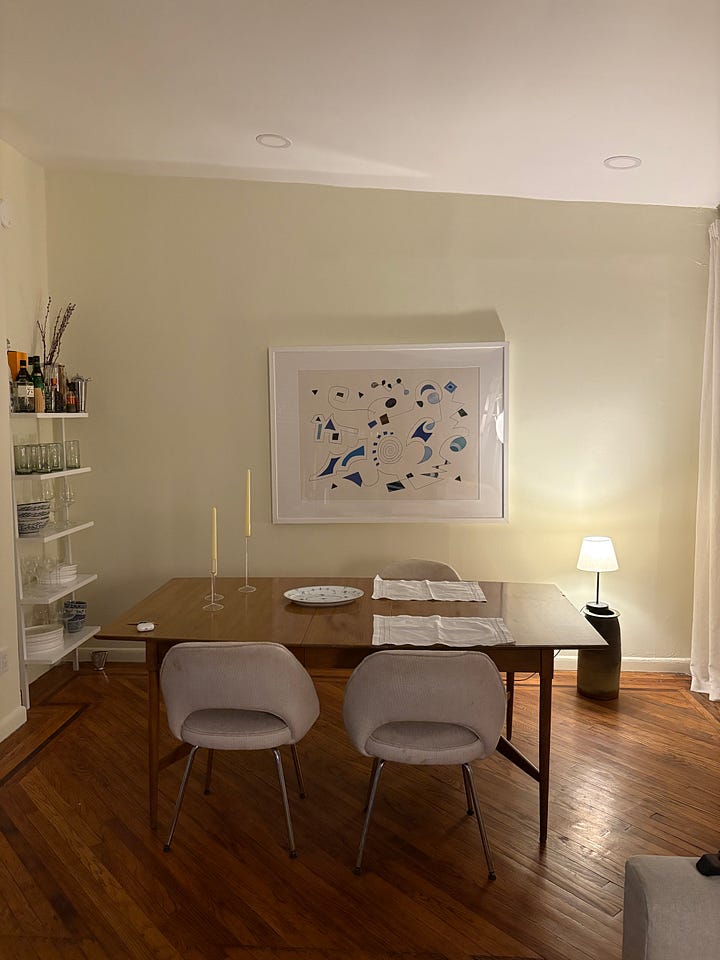
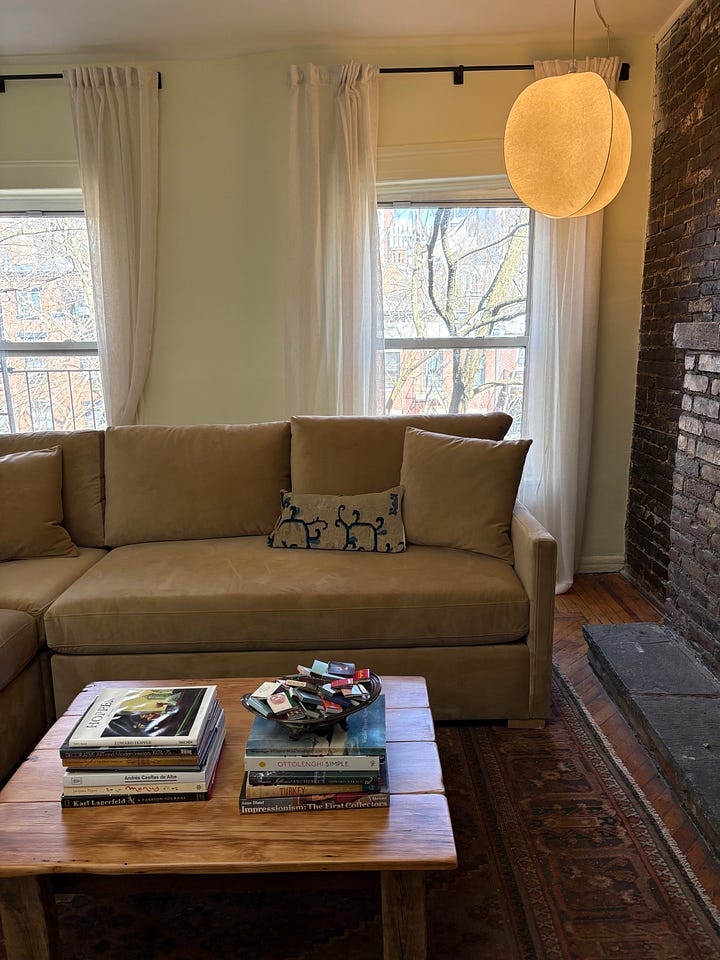
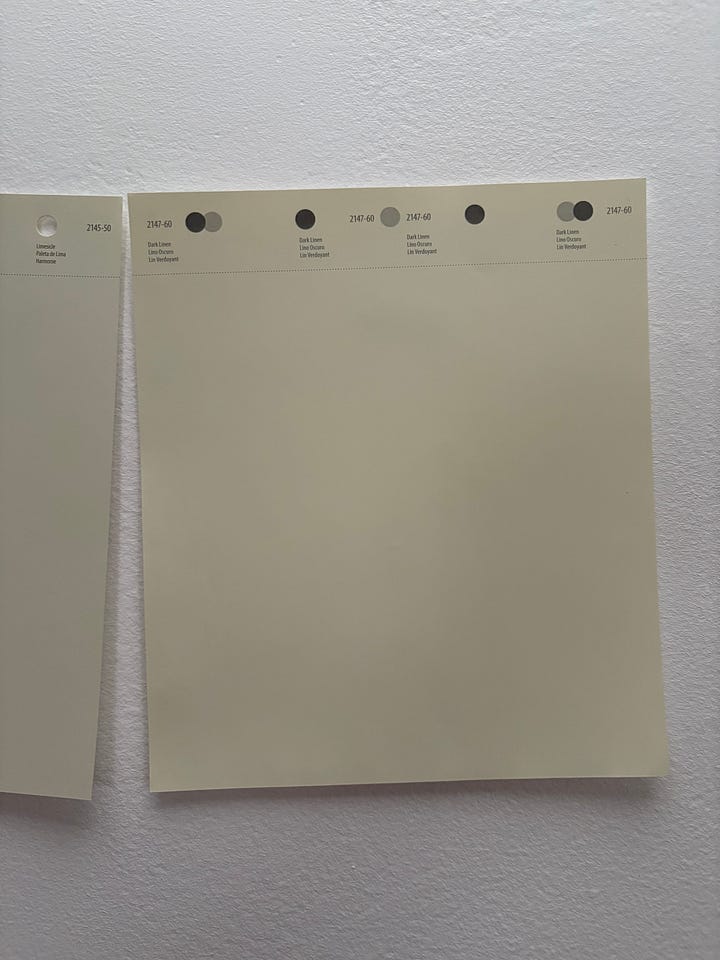

We ended up loving the paint colors and are so happy we didn’t just live with the bright white, even if for a moment we thought the apartment might all burn down. If you’re curious about painting, here are some inspirational photos below:

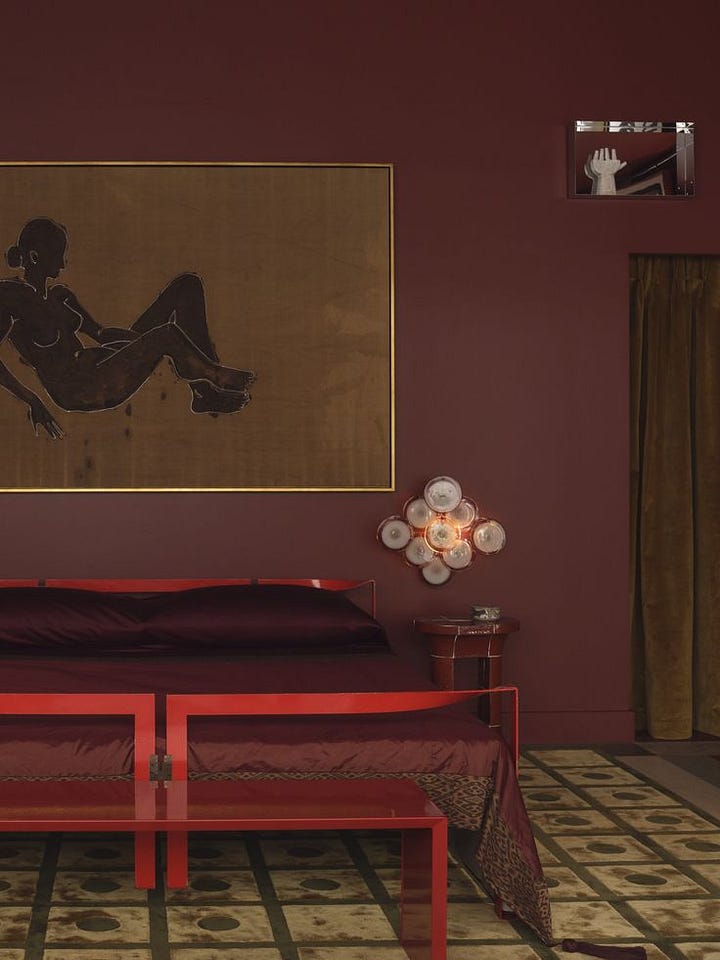
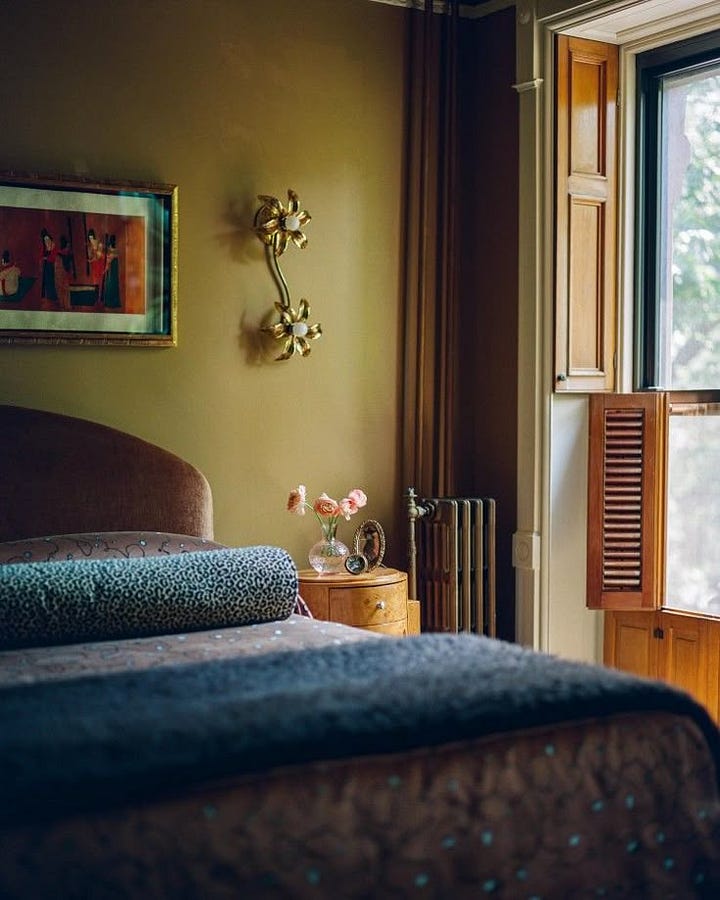
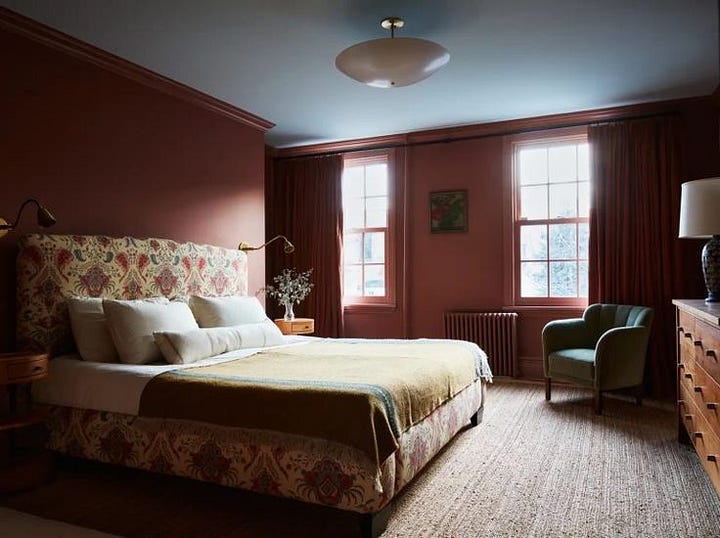

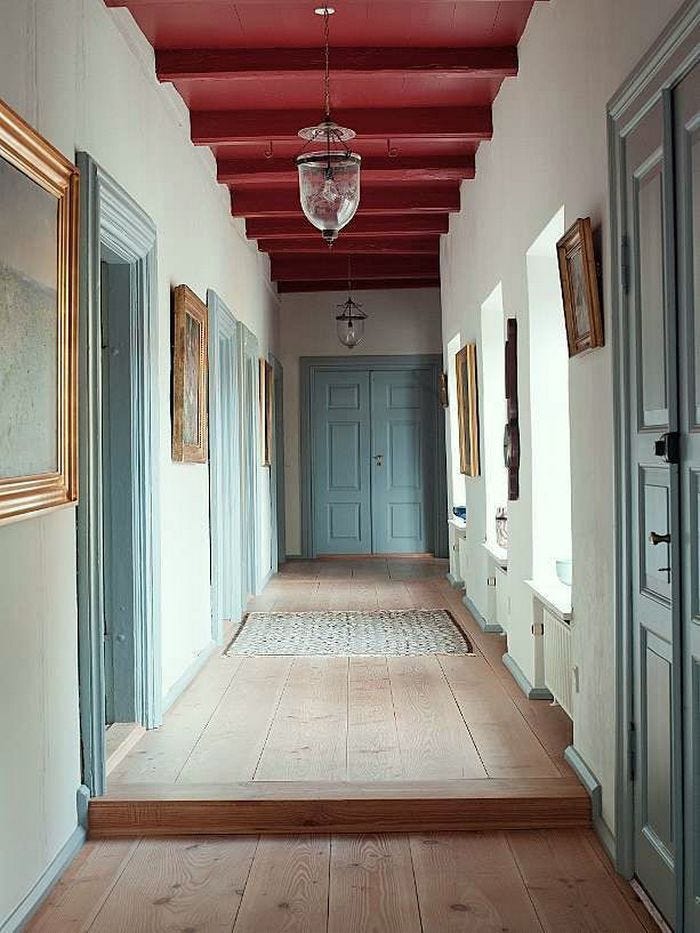
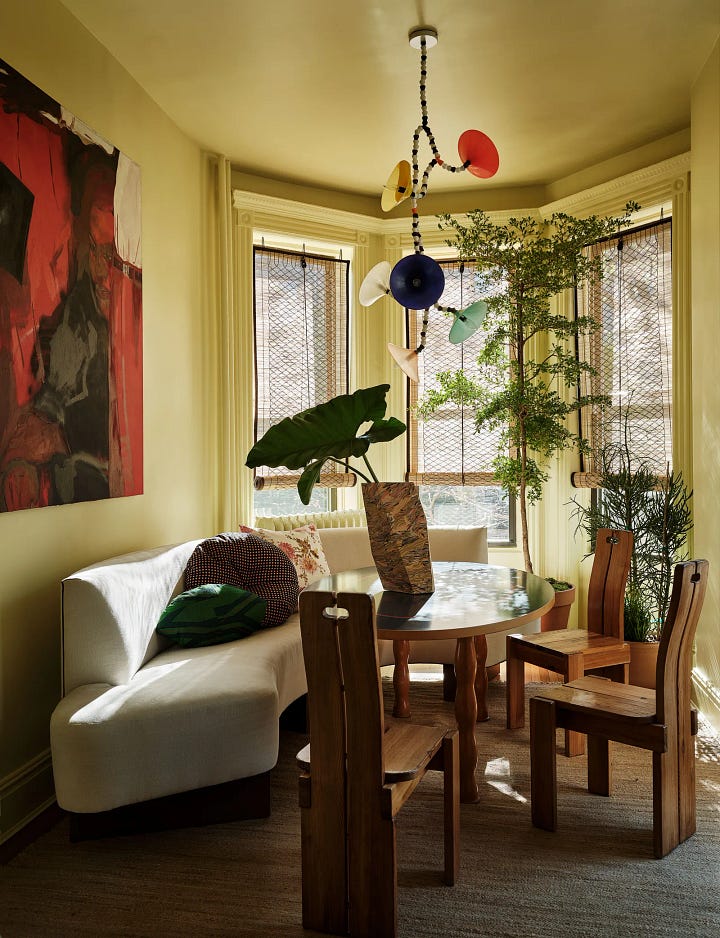

Other Oddities:
Laura Owens at Matthew Mark Gallery : I just got back from seeing this exhibit with a friend who’s a fashion designer. Her coworker recommended she go for color inspiration, and I can see why. The use of color, patterns, and overlaying collage is very interesting. I recommend this to anyone in New York!
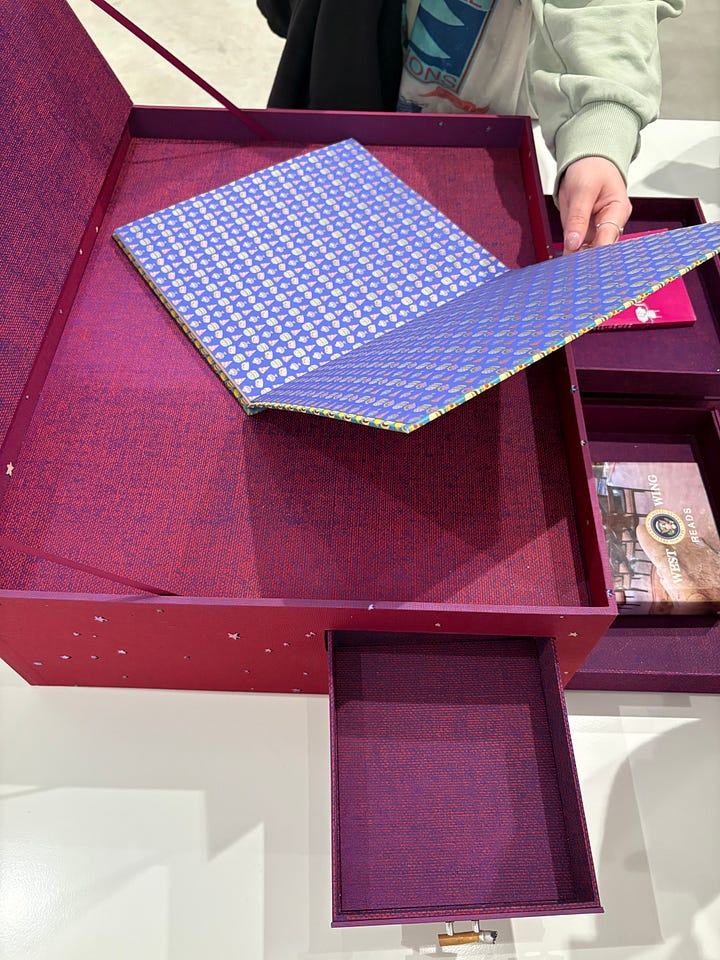
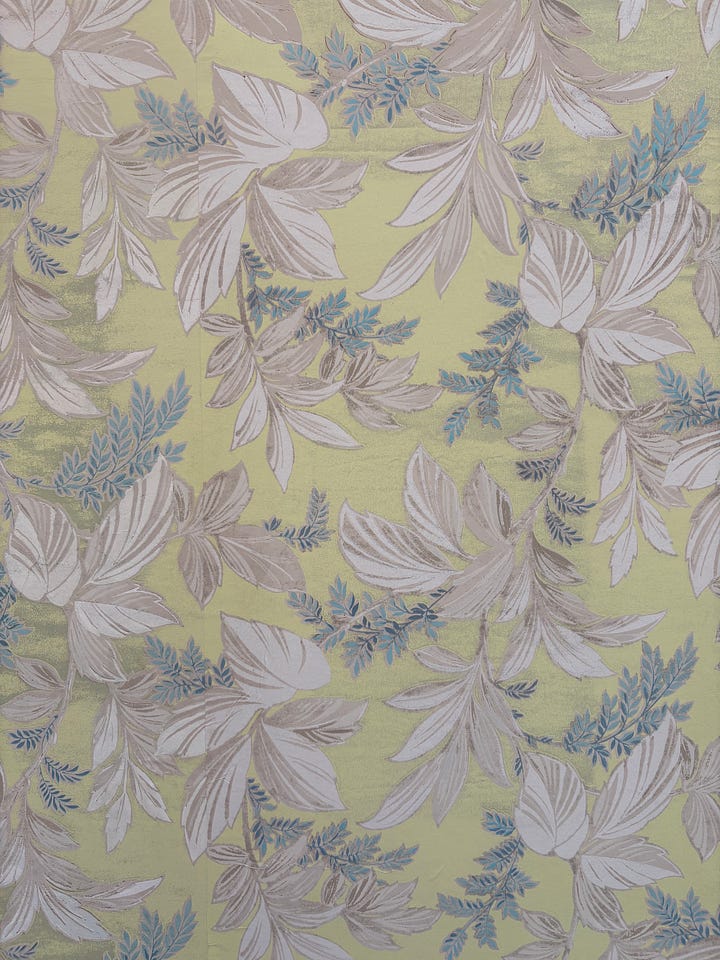

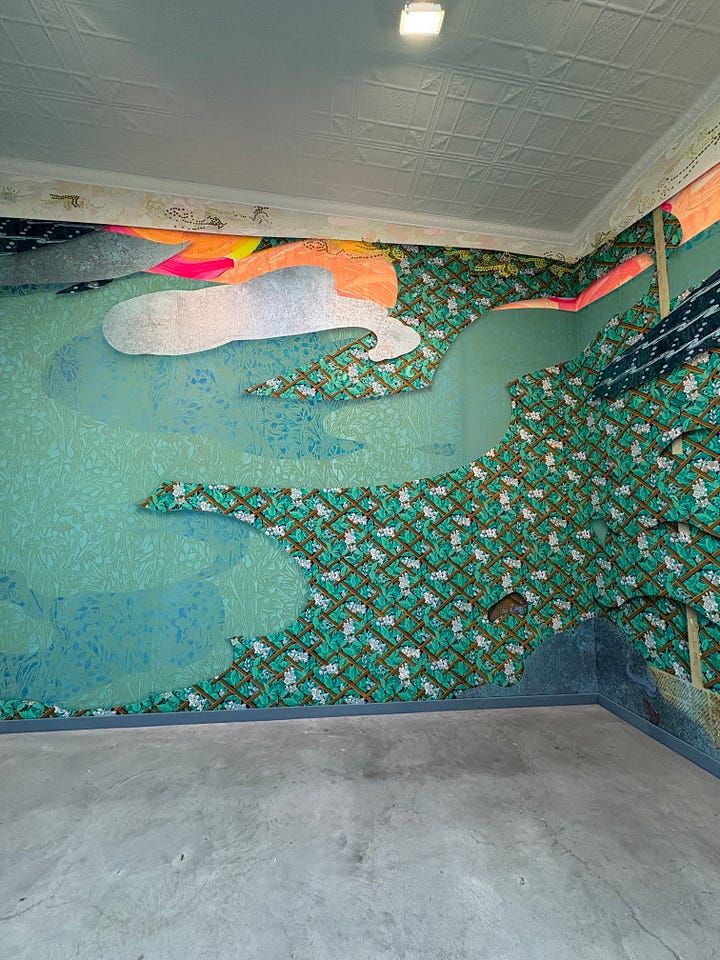
Gage and Tollner Private Room: the most perfect place to celebrate a special occasion with close friends. My good friend had 14 friends for his birthday the other Friday night. The restaurant itself is one of my all time favorites. It has a gorgeous and historic atmosphere, incredible food and drinks, and so much history. When we walked into the private space, we entered a lounge, complete with a fireplace, bar with a bartender, and piano. We got to take our coats off, get a drink and mingle a little before dinner. Then we walked into a dining room with a big table. The table was the perfect size and shape for both intimate conversations and for 14 of us to all hear each other when we wanted a group wide convo.
Two major notes for a larger dinner party that the birthday host noted:
Seating charts are superior than seating yourself. Assigned seating removes the awkward dance of who sits next to the host or guest of honor and who sits at the end.
Any music is better than silence even with close friends. I put on background music even if I have one friend over. I might be more sensitive to silence than others, but I feel more at ease and energized if there is good background music. I made a playlist called Party Background Tunes for anytime you find yourself at a party and someone says, “anyone have a playlist” or people are coming over and you’d rather enjoy yourself than DJ.
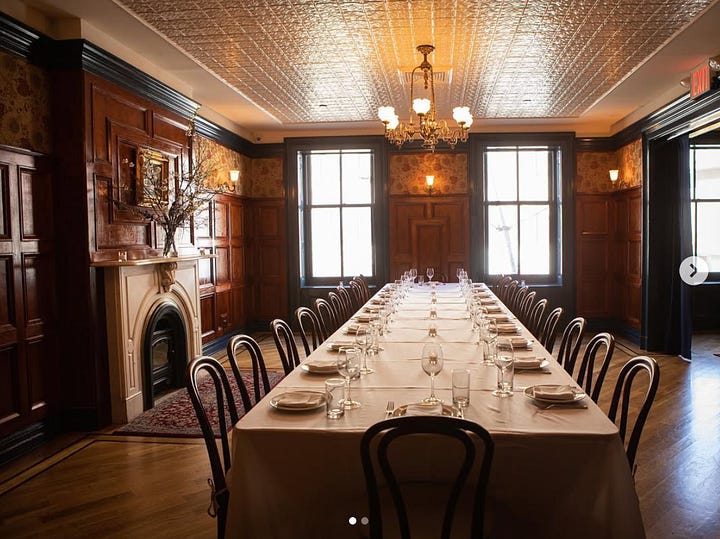

The Seven Wonders Collective in Williamsburg is near my office, so when I have time and it’s nice out, sometimes I go and quickly look just for inspiration. They have the best selection of vintage clothing. If I could buy clothing from only one place for the rest of my life it would be there. Here are just a few things I saw last week:
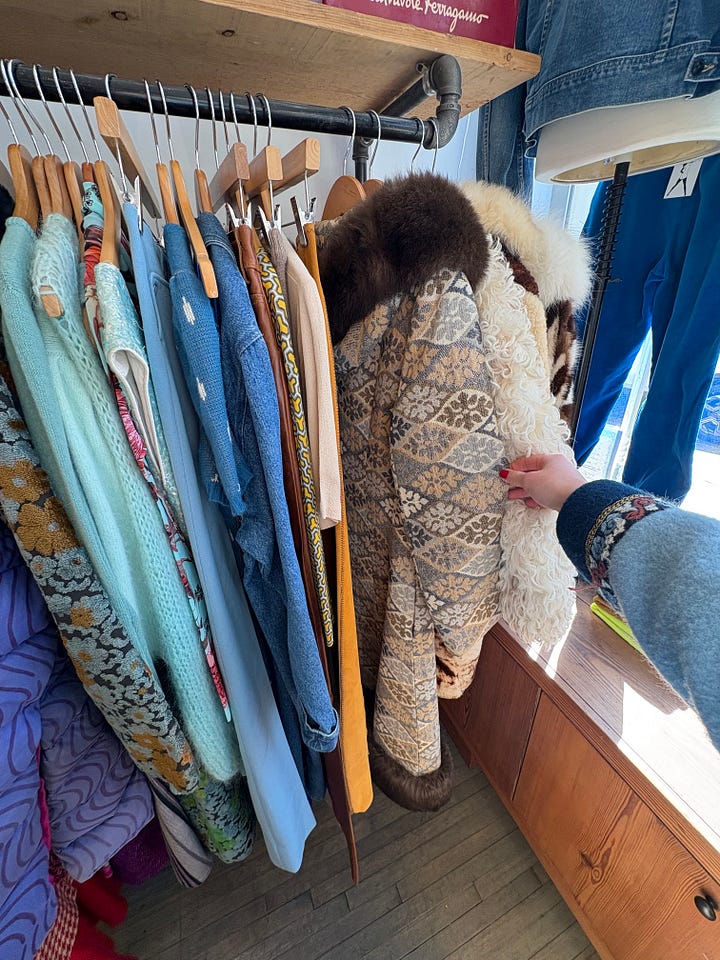
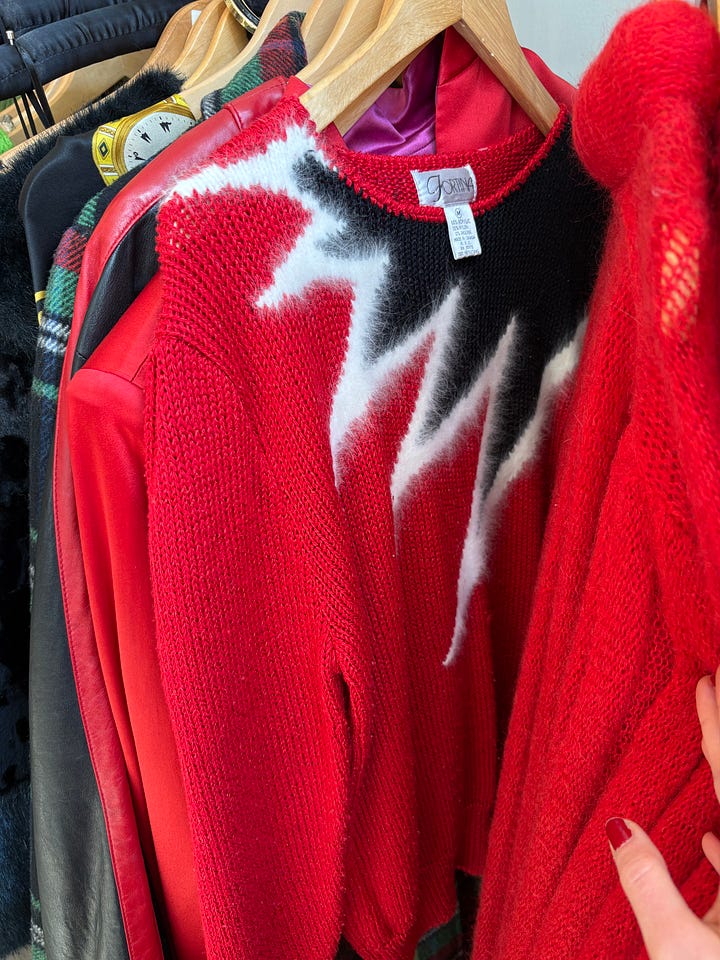
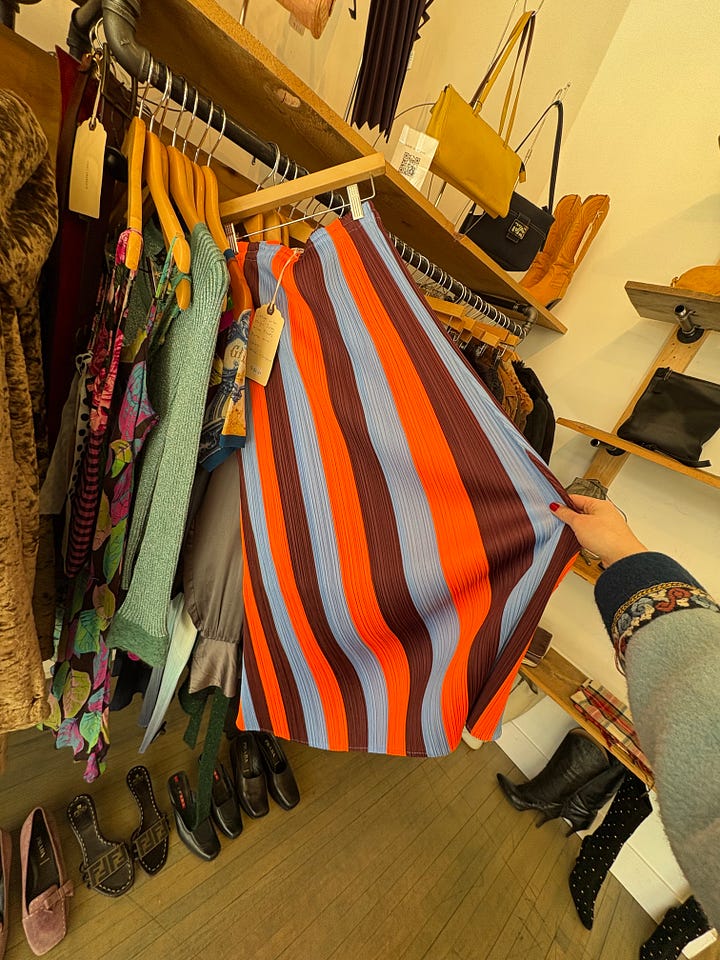
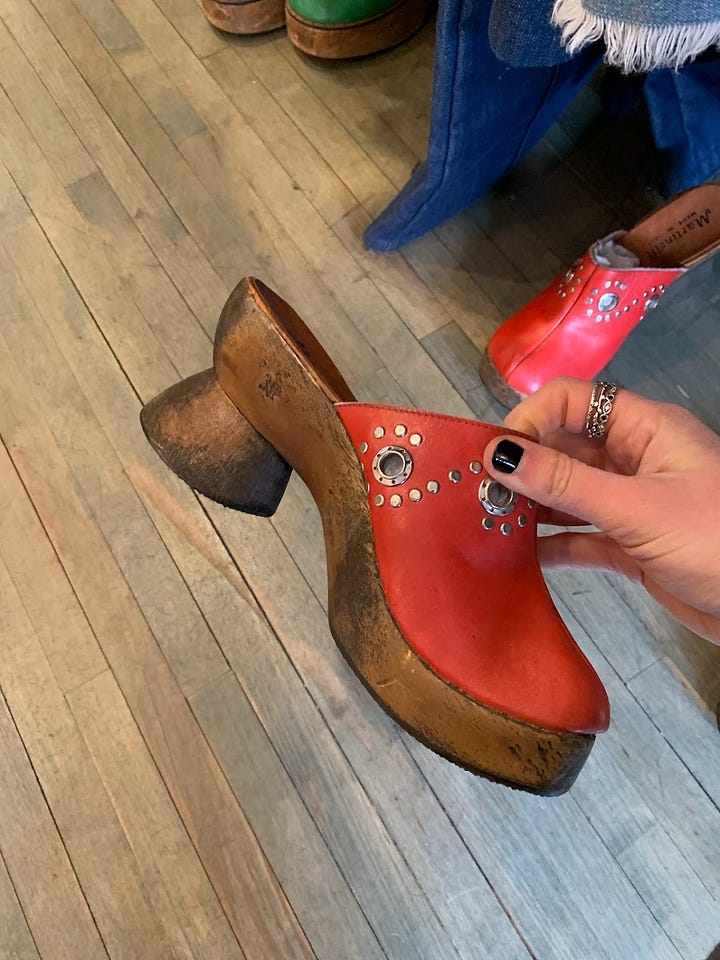
I’ll be in Yosemite this week for work, and I’m hoping to bring back some oddities. Until next time!
Annie




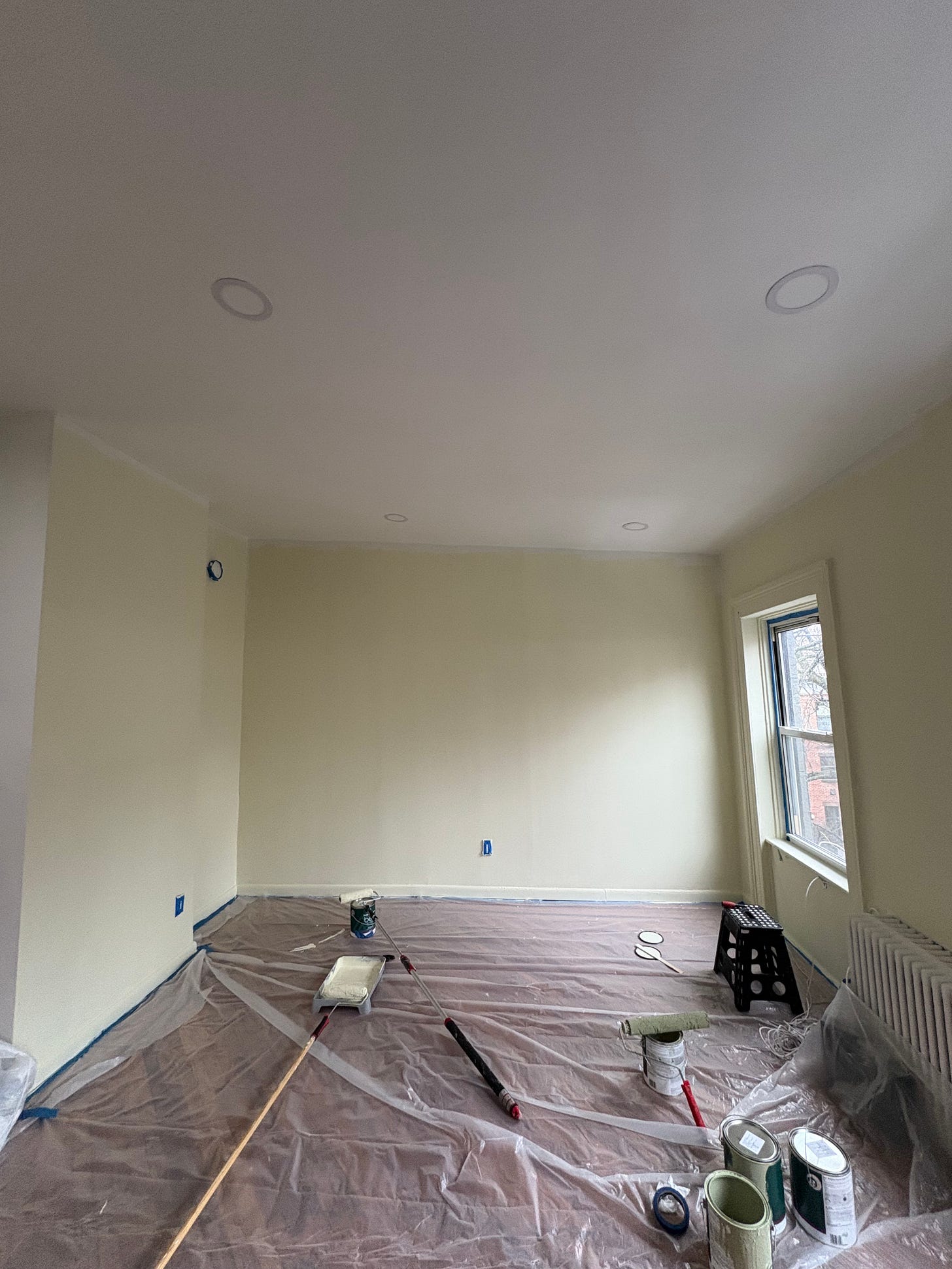
I'm definitely saving this one for the next time we paint. Your article's organization and detail -- and your honesty about the panic attack -- sort of remove my reticence and make me look at painting as a fun project. Thanks!